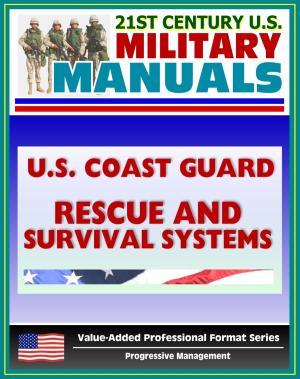21st Century FEMA Study Course: Emergency Planning (IS-235.a) - Community Emergency Plan Review, Incident Management Case Studies, NRF, ESF, EOP, Appendices and Annexes
Nonfiction, Social & Cultural Studies, Political Science| Author: | Progressive Management | ISBN: | 9781466011397 |
| Publisher: | Progressive Management | Publication: | July 1, 2011 |
| Imprint: | Smashwords Edition | Language: | English |
| Author: | Progressive Management |
| ISBN: | 9781466011397 |
| Publisher: | Progressive Management |
| Publication: | July 1, 2011 |
| Imprint: | Smashwords Edition |
| Language: | English |
. This course offers training in the fundamentals of the emergency planning process, including the rationale behind planning. It will develop your capability for effective participation in the all-hazard emergency operations planning process to save lives and protect property threatened by disaster.
The knowledge of how to plan for disasters is critical in emergency management. Planning can make a difference in mitigating against the effects of a disaster, including saving lives and protecting property, and helping a community recover more quickly from a disaster.
This course, Emergency Planning, is designed to aid emergency management personnel in developing an effective Emergency Operations Plan (EOP). Topics covered include selecting the planning team, the planning process, hazard analysis, and plan format. Emergency Planning contains seven units.
Unit 1, Course Introduction, provides an overview of the course objectives and instructions for taking the course.
Unit 2, The Planning Process, provides an overview of the emergency planning process, including the steps involved, and how to determine who should be a part of the emergency planning team.
Unit 3, Threat Analysis, describes the threat analysis process and explains why conducting a thorough threat analysis is a critical first step in emergency operations planning.
Unit 4, The Basic Plan, introduces the purpose of the basic EOP and describes its components.
Unit 5, Annexes and Appendices, introduces functional annexes and hazard-, threat-, and incident-specific appendices, including their purposes and the differences between annexes and appendices.
Unit 6, Implementing Instructions, introduces the different types of implementing instructions that may be developed at the agency level and how they are used.
Unit 7, Course Summary, reviews and summarizes the course content and serves as preparation for the final exam.
This is a privately authored news service and educational publication of Progressive Management.
. This course offers training in the fundamentals of the emergency planning process, including the rationale behind planning. It will develop your capability for effective participation in the all-hazard emergency operations planning process to save lives and protect property threatened by disaster.
The knowledge of how to plan for disasters is critical in emergency management. Planning can make a difference in mitigating against the effects of a disaster, including saving lives and protecting property, and helping a community recover more quickly from a disaster.
This course, Emergency Planning, is designed to aid emergency management personnel in developing an effective Emergency Operations Plan (EOP). Topics covered include selecting the planning team, the planning process, hazard analysis, and plan format. Emergency Planning contains seven units.
Unit 1, Course Introduction, provides an overview of the course objectives and instructions for taking the course.
Unit 2, The Planning Process, provides an overview of the emergency planning process, including the steps involved, and how to determine who should be a part of the emergency planning team.
Unit 3, Threat Analysis, describes the threat analysis process and explains why conducting a thorough threat analysis is a critical first step in emergency operations planning.
Unit 4, The Basic Plan, introduces the purpose of the basic EOP and describes its components.
Unit 5, Annexes and Appendices, introduces functional annexes and hazard-, threat-, and incident-specific appendices, including their purposes and the differences between annexes and appendices.
Unit 6, Implementing Instructions, introduces the different types of implementing instructions that may be developed at the agency level and how they are used.
Unit 7, Course Summary, reviews and summarizes the course content and serves as preparation for the final exam.
This is a privately authored news service and educational publication of Progressive Management.















